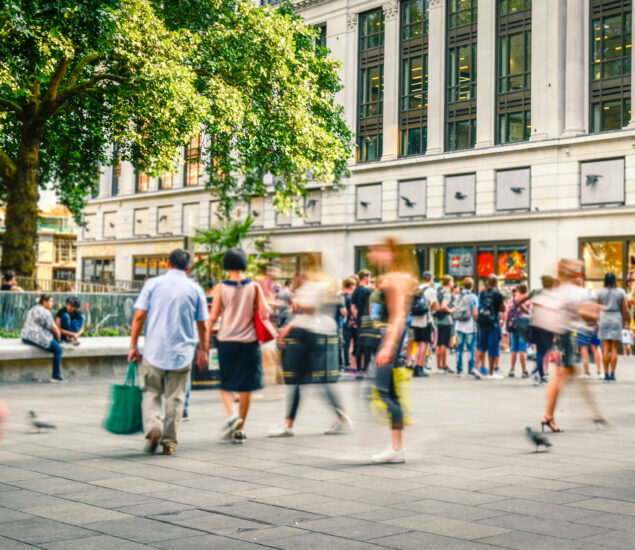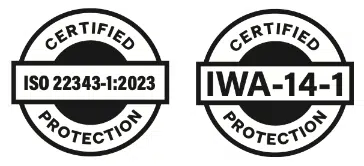“I look at it as an onion – you can have layers of security, where you have an outer layer that is clearly defined. You have to find the balance between putting in security as well as making it accessible for day-to-day activities. If you can make a clear outer protection, then you can work to integrate a Nordic-inspired model.”
Jørgen Becker-Christensen has been working as an architect, with a speciality in landscaping, at Schønherr for over 20 years and has worked on a variety of projects ranging from healthcare to infrastructure – most notably the Fehmarnbelt Fixed Link, the tunnel project between Denmark and Germany, started in 2008 and Nyt OUH (Odense University Hospital), started in 2010. Jørgen has also worked on the RAMT (Risiko Arkitektur Mennesker Terror) platform with DBI, MOE and Bertelsen & Scheving, which provides knowledge and tools for terror protection. Among many other things, RAMT focuses on the need for a holistic approach to terror protection, where physical security is considered together with fire strategy, preparedness, and security culture.
Can you tell me a bit about your work with DBI, MOE, and Bertelsen & Scheving on the RAMT Platform? How does it work to promote holistic design when it comes to security?
“It has opened up the possibility for a great network concerning how to work with security and landscaping as well as architecture and planning in general. We try to push the way you look at security. But again, we also know that we cannot overstep this — we have to make sure that what we do is properly tested and that it is in agreement with local authorities like PET (Politiets Efterretningstjeneste) or any requirements that must be fulfilled. But we also need to show that we can develop on this. This is interesting when you look at certain products (for example, Milford’s and Unafor’s products) and how we can push this to a new level and make it into a more integrated design.
“RAMT provides a tool that goes into the process, it describes every phase of how you plan a project. We can all come up with the security design, but sometimes it’s too late in the process. If it’s an add-on in the last moment, then it ends up as something that is not properly integrated. But it’s possible to incorporate it early on in the process. When you have your first meeting with a client or when you’re actually doing the planning in the municipality, you can develop ideas on how to implement security or question whether it is even needed (which is equally feasible). If you have this awareness in the early stages, you can end up with a much better project.
“What is really important, is that we take it a step further and go into the maintenance phase as well — where you look at the complete project overtime and explore how it could look when it’s done. But if you don’t have an agreement with your client and the people who are doing the maintenance afterwards, it doesn’t help. You have to be aware of the special criteria and elements that go into it when you’re working with security. You have to emphasize the maintenance and communicate to the people doing the maintenance that this needs extra care. For example, you might have to do a maintenance check once a year to see if everything is as it should be. Is something corroded or broken? Is everything still working or still in place? The maintenance process can be easy if you have a bollard. Yet if you have hidden structures, for example, you need to be able to access that and control these areas. Often you can see products, such as planters, where you need to make sure a maintenance crew have access to them, and that they are aware they are there.”
Can we properly certify and maintain non-traditional security measures, such as trees or sand dunes?
“A couple of years ago, if you asked PET, they would say you cannot use trees because it creates a lot of problems. Trees can cause problems, because they may not be strong enough to stop a car and if there is an explosion, for example, it could generate fragments of the tree, which could cause even more damage. But this has actually changed. The latest documents from PET note that you can use trees, but you have to place them with a certain distance between them and they have to be a certain size. You might also need to add in an extra level of security for a certain number of years — maybe 10-20 years — such as a bollard. Over time, the bollards can be removed, and then the tree would be properly integrated as a security measure.
What happens if the tree rots?
“Depending on what kind of tree you have planted, the issue of rot would maybe be 50 to 100 years out in the future. When you talk about maintenance, you have to recognise it is a part of the security measures that you put in and realise that measures like trees need maintenance to maintain their efficiency.”
The UK has had to respond quickly to terror attacks, while Denmark has had the time to work on proper integration and create a holistic security model (let’s call it a “Nordic model”). Is it possible for a place like the UK to adopt this model?
“I think so. But I also think it goes both ways. Maybe we need to look at some of the ways they do it in the UK and show, visually, that there is a high level of security.
“I look at it as an onion – you can have layers of security, where you have an outer layer that is clearly defined. You have to find the balance between putting in security as well as making it accessible for day-to-day activities. If you can make a clear outer protection, then you can work to integrate a Nordic-inspired model. This goes for the UK as well.”
“I think, at some level, you need a very precise outer layer. However, when we think about response time, for example, too many elements can create a problem. Benches, raised levels, or an integrated climate solution (where you have water elements), can end up making it difficult to access an area, and even escape the area. That also goes for bollards or other elements that build up a level of security. It’s not that you can’t use one or the other, you just have to use it in the right places. And if you can create a strong outer perimeter that signals the area is secure, then you can make more integrated design within.”
Is it feasible to create a space that is open when implementing security features?
“It’s more feasible if you have a new project and you can integrate it into a new space. But when you have an existing area, then you sometimes don’t have much space and that can present problems. If, for example, you have a relatively narrow street and you need to secure the buildings, it becomes difficult to implement green elements as you don’t have the space for it. Space restrictions can make it very difficult to implement integrated design. This is where we have to compromise – when you have a restricted space, it defines what is possible. When you have open spaces, city squares, or a new street it is much easier to implement these integrated security measures. Especially if you can make them more multi-functional.”






